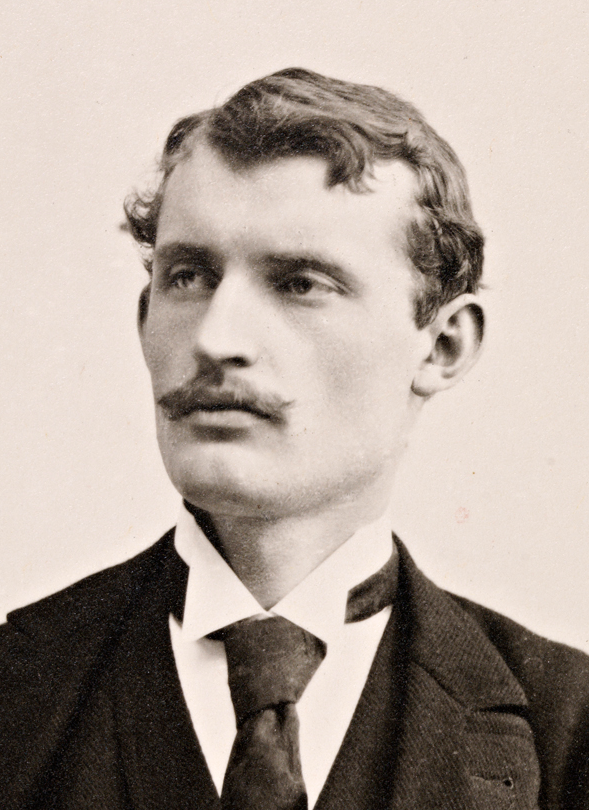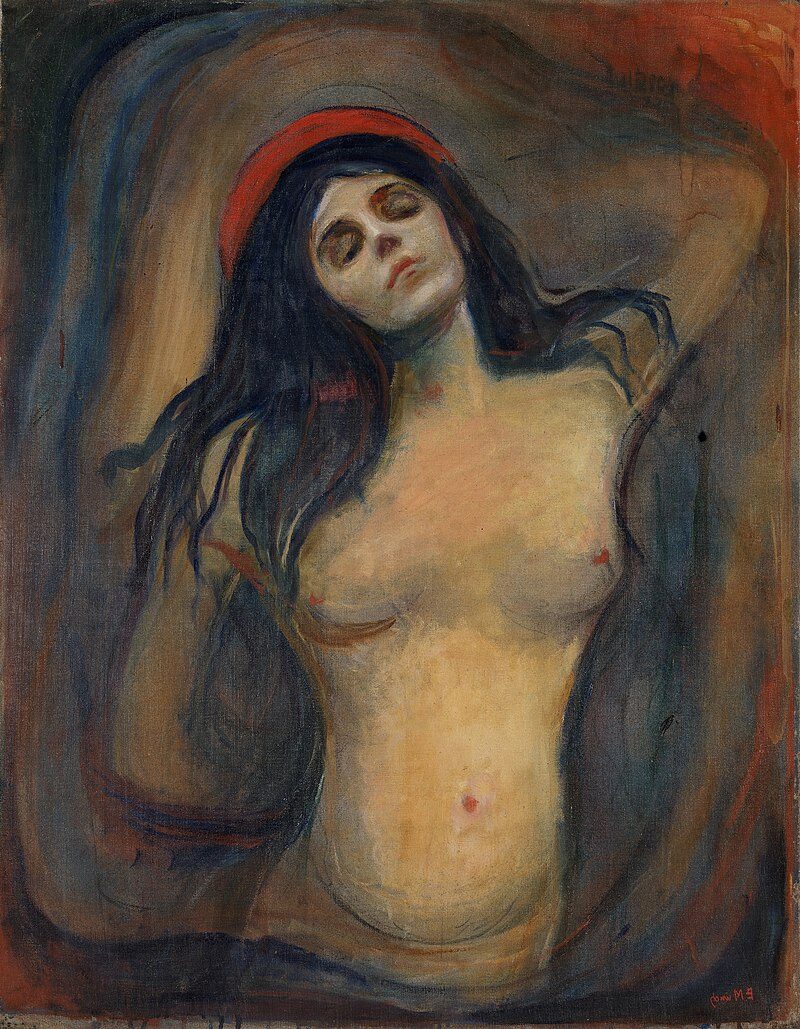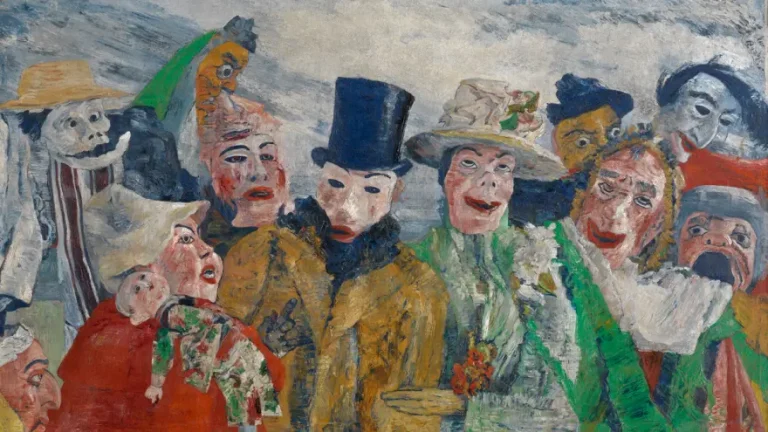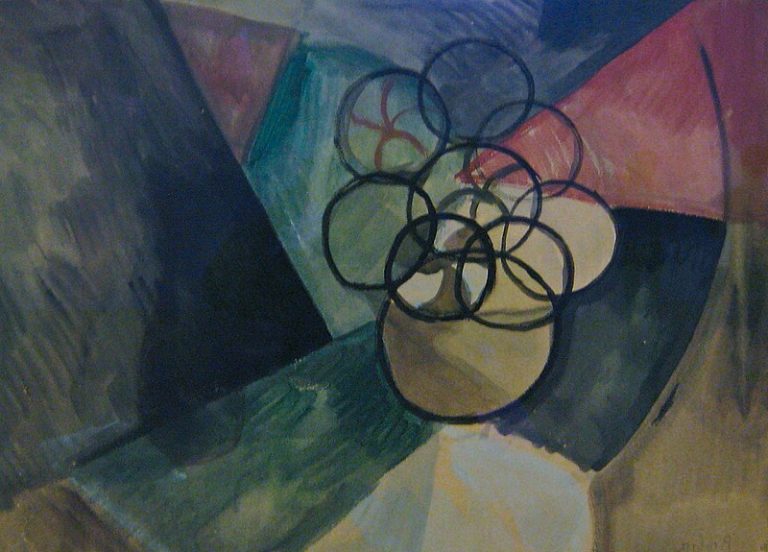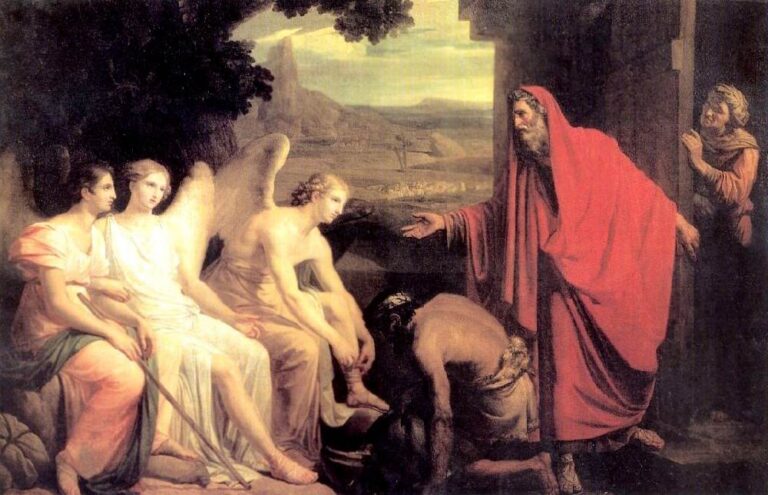Edvard Munch: Painter Behind “The Scream” and Expressionist Legacy
Born: 12 December 1863, Ådalsbruk, Løten, Norway
Death: 23 January 1944, Oslo, Reichskommissariat Norwegen
Art Movement: Expressionism, Symbolism
Nationality: Norwegian
Influenced By: Paul Gauguin, Vincent van Gogh, and Henri de Toulouse-Lautrec
Institution: Royal School of Art and Design, Oslo
Edvard Munch: Painter Behind “The Scream” and Expressionist Legacy
Life and Career of Edvard Munch
Edvard Munch (1863-1944) was a Norwegian painter. His emotional and psychological themes revolutionized modern art. His intensely personal style bridged 19th-century Symbolism with 20th-century Expressionism.
Early Life and Education
Munch was born on December 12, 1863, in Løten, Norway. His mother died of tuberculosis when he was five, and his sister died of the same disease nine years later. These early encounters with death profoundly shaped his worldview and later artistic themes.
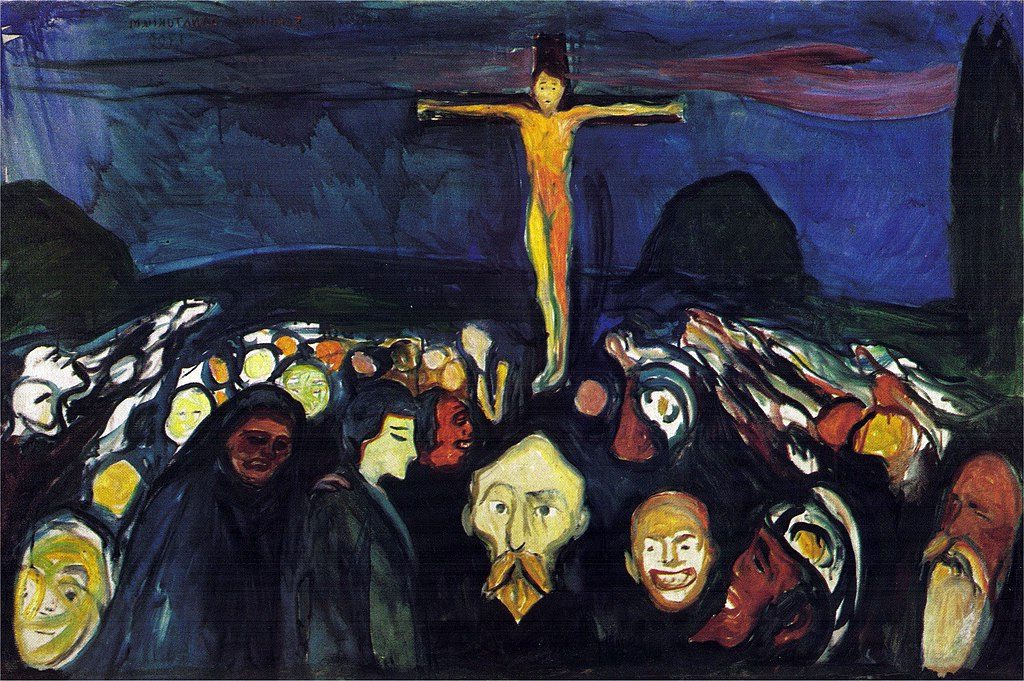
Golgotha (1900) by Edvard Munch
In 1881, Munch enrolled at the Royal School of Art and Design in Kristiania (now Oslo). His formal training was relatively brief, as he quickly developed his own distinctive style.
During the 1880s, Munch traveled to Paris where he was influenced by Post-Impressionism and Symbolism. These movements freed him from the constraints of traditional Norwegian painting and encouraged his experimental approach.
Artistic Milestones and Evolution
Munch’s breakthrough came with “The Sick Child” (1885-86), a deeply personal work inspired by his sister’s death. This painting marked his shift toward emotional expression rather than realistic representation.
In 1893, Munch created his most famous work, “The Scream,” which became an icon of modern anxiety. This period also saw the development of his “Frieze of Life” series exploring love, anxiety, and death.
After a nervous breakdown in 1908, Munch’s style gradually shifted. His later works featured brighter colors and themes of workers and landscapes, though still with his distinctive emotional intensity.
From 1916 until his death in 1944, Munch lived in relative isolation at his estate in Ekely, near Oslo. There he produced numerous self-portraits and continued refining his artistic vision.
Key Influences and Contemporaries
Munch’s work was shaped by several important movements and figures. Henrik Ibsen’s psychological dramas influenced his narrative approach, while philosopher Friedrich Nietzsche’s ideas about human suffering resonated with his worldview.
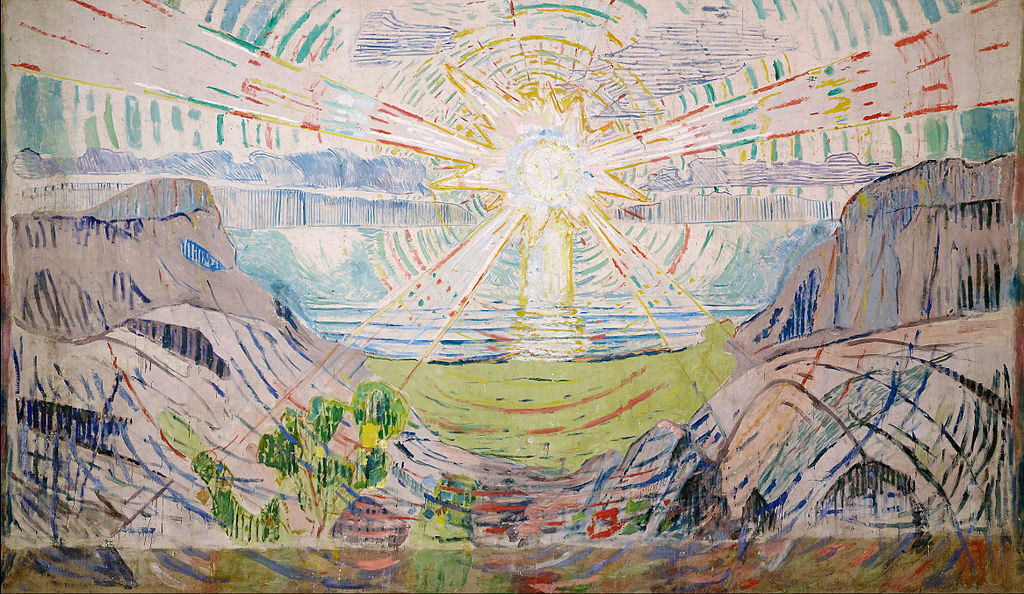
The Sun (1910–1911) by Edvard Munch
In Berlin during the 1890s, Munch became associated with a bohemian circle that included playwright August Strindberg. These connections helped spread his work throughout Europe.
Munch’s expressionistic style influenced many later artists, particularly German Expressionists like Ernst Ludwig Kirchner. His bold use of color and emotional directness paralleled developments by contemporaries like Vincent van Gogh and James Ensor.
Despite periods of harsh criticism, Munch persisted in his unique vision. By the time of his death, his place in art history was secured as a pioneer who gave visual form to inner emotional states.
Signature Works
Edvard Munch created several iconic paintings that defined his artistic legacy and shaped the Expressionist movement. His most famous works reveal his preoccupation with themes of anxiety, illness, love, and death through powerful imagery and emotional intensity.
The Scream
“The Scream” (1893) stands as Munch’s most recognizable work and one of the most iconic images in art history. The painting depicts a distorted figure on a bridge with hands pressed against its face in a gesture of extreme anguish.

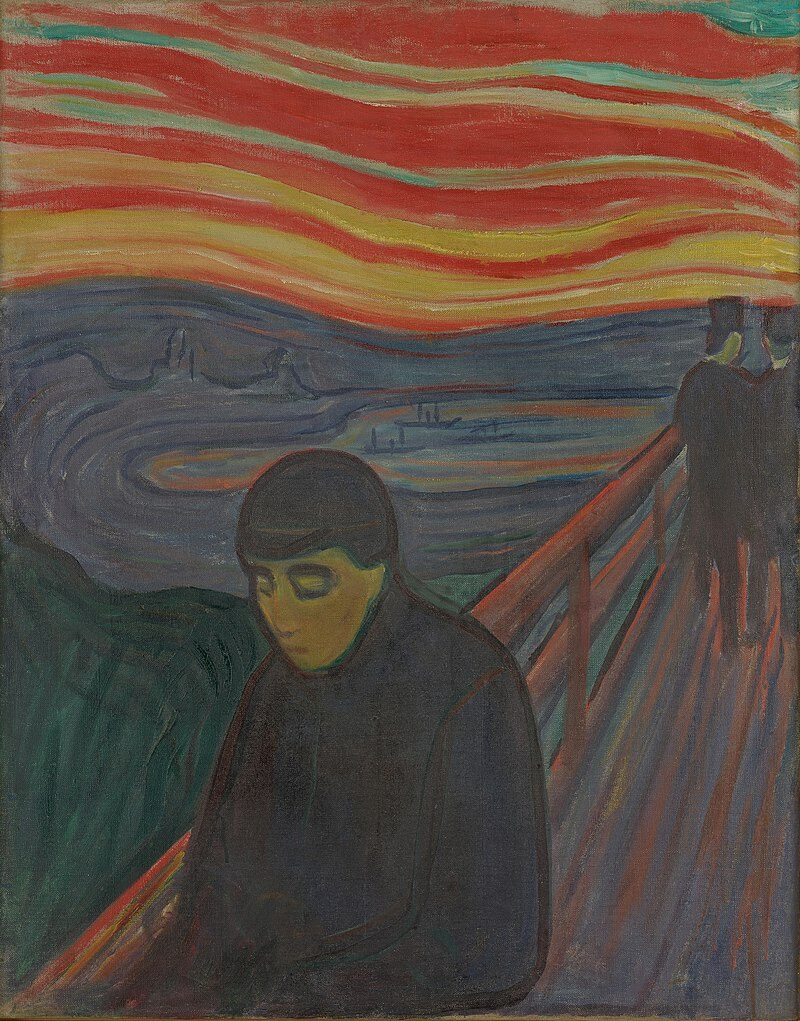
The swirling landscape and blood-red sky intensify the mood of existential dread. Munch created four versions of “The Scream” using different techniques:
- Oil, tempera, and pastel on cardboard (National Gallery, Oslo)
- Pastel on cardboard (Munch Museum, Oslo)
- Tempera on cardboard (private collection)
- Lithograph prints (various collections)
Munch explained his inspiration came from a walk where “the sky turned blood red” and he “felt a scream passing through nature.” The painting has become a universal symbol of modern anxiety and alienation.
Madonna
Munch’s “Madonna” (1894-1895) presents a striking fusion of sexuality and spirituality. The painting portrays a nude woman with her head tilted back, eyes closed, floating in a dark space surrounded by a red halo.
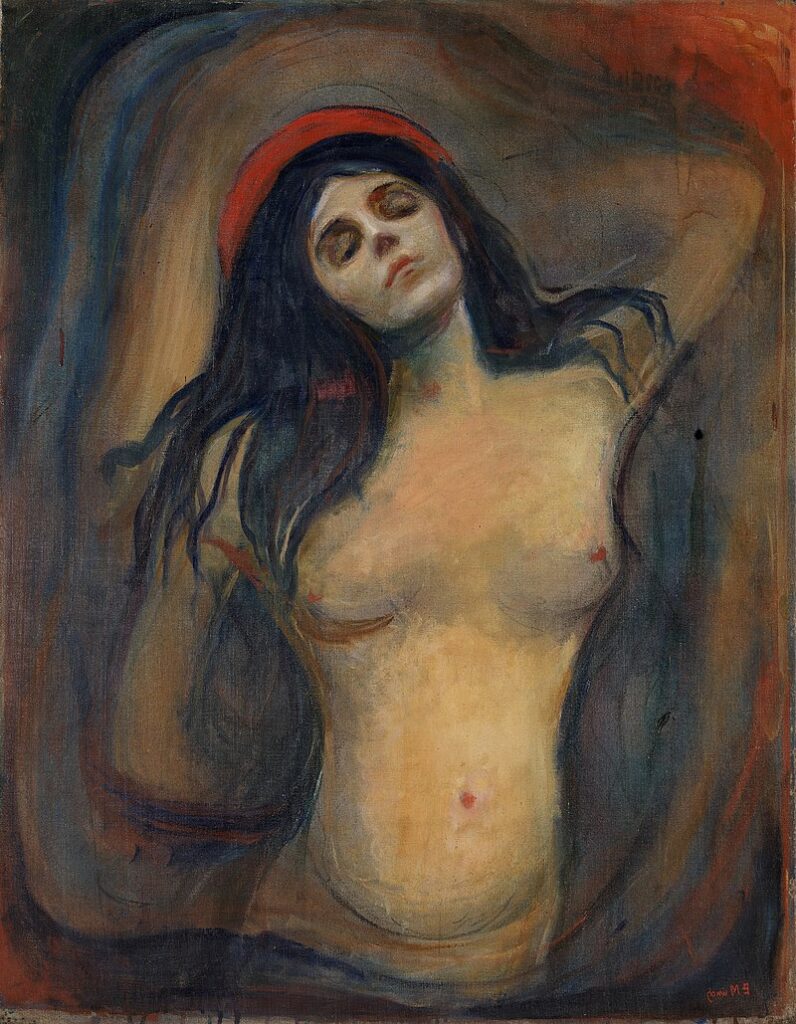
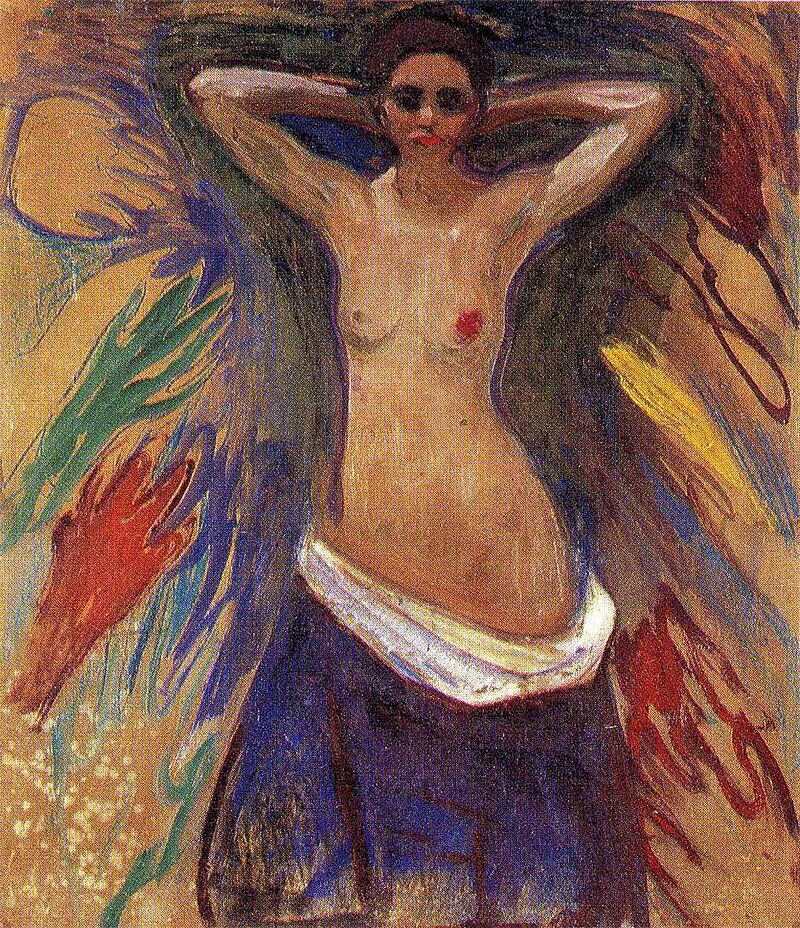
The figure exists in a dreamlike state between ecstasy and death. Munch created several versions of “Madonna,” including a lithograph that features a frame decorated with sperm cells and a fetus in the corner.
This controversial imagery connects sexual love with conception and mortality. The painting’s title deliberately invokes religious iconography while subverting it with explicit sexuality.
Art historians consider “Madonna” one of Munch’s most complex works. It exemplifies his belief that profound human experiences like love, sex, and death are interconnected.
The Sick Child
“The Sick Child” (1885-1886) draws from Munch’s painful childhood memories of his sister Sophie’s death from tuberculosis when he was 14. This deeply personal work marked a turning point in his artistic development.
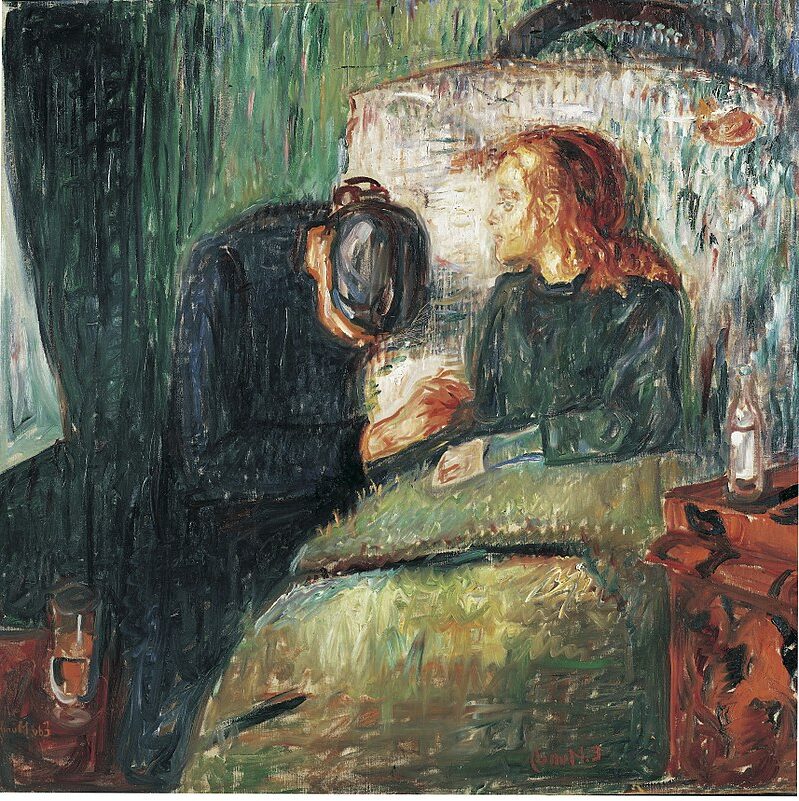
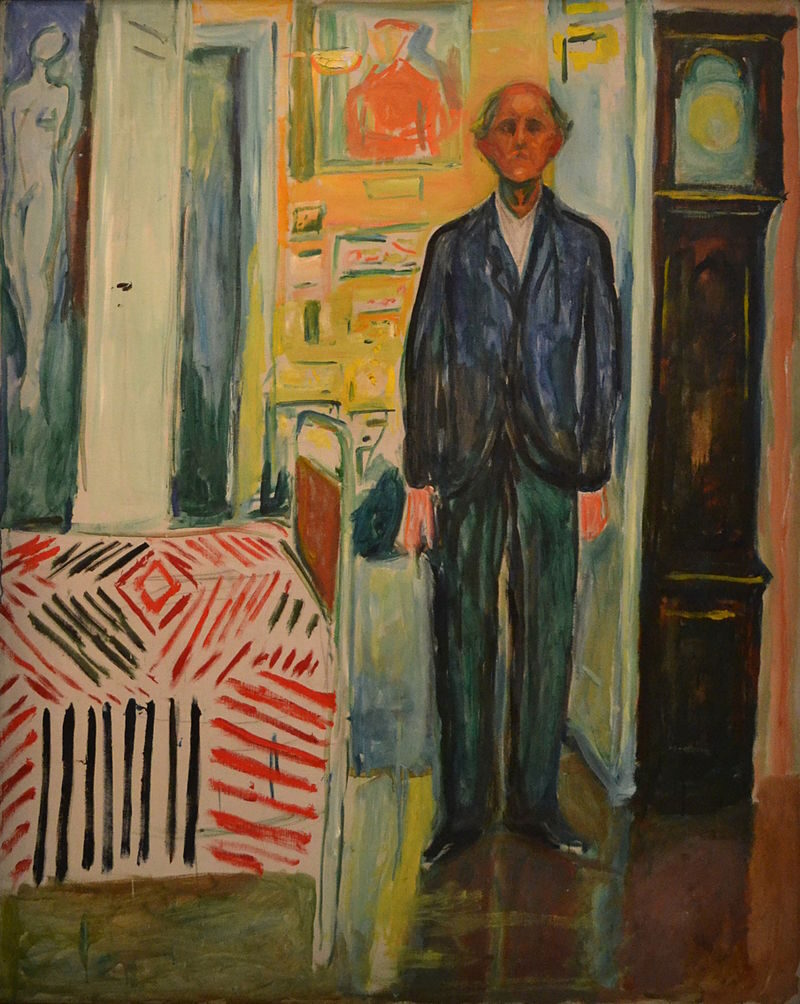
Munch revisited this subject six times between 1885 and 1926, refining his emotional approach. The painting shows a pale young girl propped up on pillows, facing a grieving woman (likely the mother) beside the bed.
The brushwork appears deliberately scratched and unfinished, creating a sense of fragmented memory. Munch explained: “In the Sick Child I broke new ground—it was a breakthrough in my art.”
This painting represents Munch’s first significant departure from naturalism toward the emotionally charged expressionism that would define his career. Critics initially rejected the work’s raw emotional quality and unconventional technique.
The Dance of Life
“The Dance of Life” (1899-1900) forms a key component of Munch’s “Frieze of Life” series exploring the human lifecycle. The painting depicts three women and several dancing couples against a moonlit shoreline.
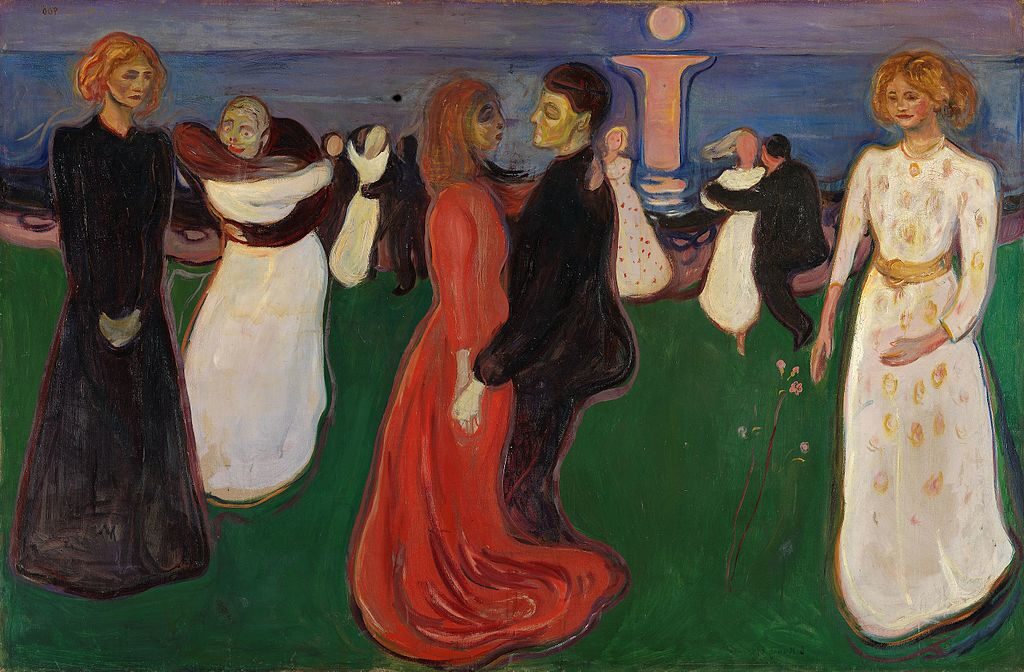
The Dance of Life (1899–1900) by Edvard Munch
The central figures represent different stages of womanhood:
- A young woman in white (innocence)
- A red-dressed dancer with her partner (passionate love)
- A woman in black (old age or death)
Munch uses color symbolically throughout the work. The red dress of the central figure connects to the blood-like reflection in the water.
The dancing couples move in a circle, suggesting life’s cyclical nature. This composition illustrates Munch’s recurring theme that life, love, and death exist in continuous rotation.
Art critics view “The Dance of Life” as one of Munch’s most completely realized symbolic works, encapsulating his profound understanding of human experience.
Impact and Legacy
Edvard Munch’s influence extends far beyond his lifetime, reshaping modern art through his emotional intensity and psychological depth. His revolutionary approach to expressing inner feelings through art continues to resonate with artists and audiences worldwide.
Contribution to Expressionism
Munch stands as a founding father of Expressionism, a movement that prioritized emotional impact over realistic representation. His bold use of color, distorted forms, and symbolic imagery helped define this influential artistic movement.

At the Roulette Table in Monte Carlo (1892) – Edvard Munch
“The Scream” (1893) exemplifies his expressionist approach, using swirling lines and vivid colors to convey anxiety and alienation. This technique broke from traditional painting methods of the late 19th century.
Munch’s themes—death, anxiety, love, and jealousy—gave voice to the psychological undercurrents of modern life. His work bridged 19th-century Symbolism and 20th-century Expressionism, particularly influencing German Expressionist groups like Die Brücke and Der Blaue Reiter.
Influence on Later Artists
Munch’s psychological intensity and emotional honesty influenced generations of artists across disciplines. His expressive style impacted major 20th-century movements including Abstract Expressionism and German Expressionism.
Artists like Max Beckmann, Ernst Ludwig Kirchner, and Oskar Kokoschka directly acknowledged Munch’s influence on their work. Even Francis Bacon, with his distorted human figures, shows echoes of Munch’s approach to depicting psychological states.
Beyond painting, Munch’s visual language has inspired filmmakers, writers, and musicians. His iconic images have been referenced in popular films, music videos, and literature.
Contemporary artists continue drawing inspiration from his emotional depth and symbolic imagery. His visual vocabulary has become part of our collective cultural consciousness.
Preservation of His Art and The Munch Museum
When Munch died in 1944, he bequeathed his remaining works to the city of Oslo. This generous gift formed the core of the Munch Museum, which opened in 1963.
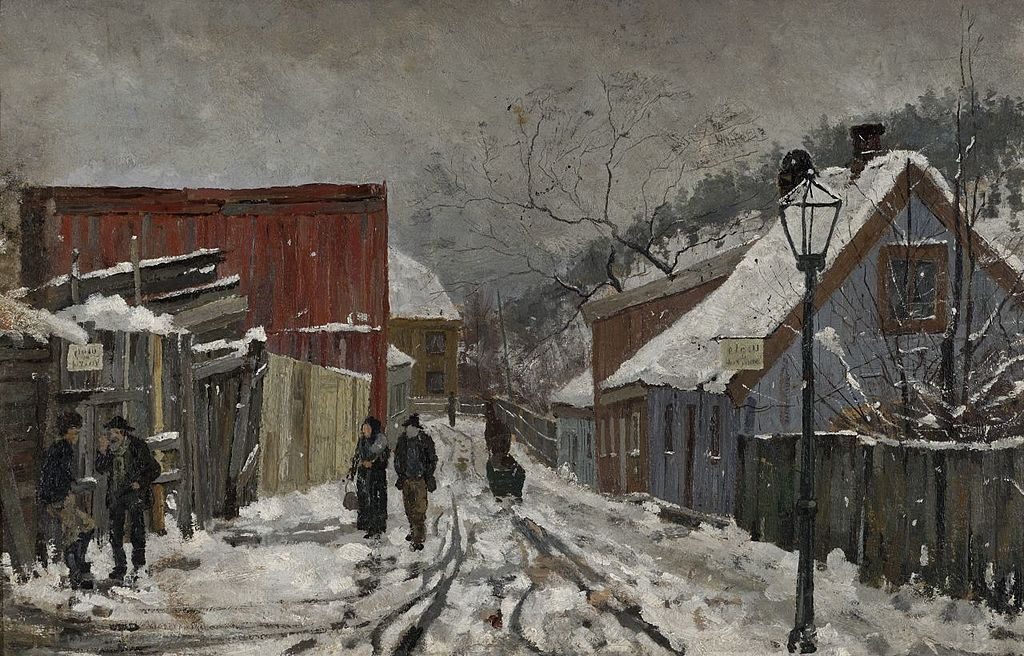
From Saxegårdsgate (c. 1882) by Edvard Munch
The museum relocated to a new building in Oslo’s waterfront district in 2021. This 13-story structure provides improved space for exhibiting, studying, and preserving Munch’s massive body of work.
Major museums worldwide, including MoMA in New York and the National Gallery in London, prominently display his paintings. His works regularly achieve record prices at auctions, with “The Scream” selling for nearly $120 million in 2012.
Digital preservation efforts have made Munch’s art accessible to global audiences through online collections and virtual exhibitions. These initiatives ensure his artistic legacy will continue inspiring future generations.
Frequently Asked Questions
Edvard Munch established himself as one of the most influential artists of the late 19th and early 20th centuries. His distinctive style and emotional depth continue to fascinate art enthusiasts worldwide.
What is the historical significance of Edvard Munch’s painting style?
Munch’s painting style broke from traditional artistic conventions of his time. He prioritized emotional truth over visual realism, using distorted forms and vivid colors to convey psychological states.
His work served as a bridge between the Symbolist movement of the 19th century and the Expressionist movement that flourished in the early 20th century. This transition made him a pivotal figure in art history.
Munch’s emphasis on inner feelings rather than external appearances influenced generations of artists who sought to express psychological truths in their work.
How did Edvard Munch’s life experiences influence his artwork?
Munch’s early life was marked by tragedy, with the deaths of his mother and sister from tuberculosis when he was young. These experiences of loss and grief appeared repeatedly in his art, particularly in works like “The Sick Child.”
His own struggles with mental health and alcoholism informed the anxiety and existential dread visible in many of his paintings. The raw emotion in his work stems directly from his personal experiences.
Munch’s tumultuous romantic relationships also influenced his art, particularly in his “Frieze of Life” series, which explores themes of love, anxiety, and death.
Which techniques and mediums did Edvard Munch commonly use in his paintings?
Munch worked across multiple mediums, including oil paint, watercolor, pastel, and printmaking techniques like woodcuts and lithography. His printmaking skills were particularly innovative and influential.
He often applied paint in thin layers or scratchy brushstrokes that conveyed emotional intensity. This technique created a sense of movement and unease in his compositions.
Munch frequently used bold, non-naturalistic colors to express emotional states rather than physical reality. His deliberate distortion of forms and perspective further emphasized psychological content over visual accuracy.
What are the most notable artworks by Edvard Munch, besides ‘The Scream’?
“Madonna” (1894-1895) shows a woman in a moment of ecstasy, combining themes of love, sex, and death in Munch’s characteristic style. The painting exists in several versions, including paintings and lithographs.
“The Sick Child” (1885-1886) portrays his sister Sophie’s death from tuberculosis and represents one of his most personal works. Munch created six paintings of this scene throughout his career.
“Anxiety” (1894) depicts a crowd of hollow-faced figures on a bridge, conveying collective dread. “The Dance of Life” (1899-1900) uses symbolic figures to represent different stages of romantic love.
How did Edvard Munch contribute to the Expressionist movement?
Munch is often considered a forefather of Expressionism, despite predating the formal movement. His emphasis on depicting inner emotional states rather than external reality became a defining characteristic of Expressionism.
German artists of the Die Brücke and Der Blaue Reiter groups were directly influenced by Munch’s bold use of color and emotional intensity. His 1892 Berlin exhibition, though controversial, planted seeds for the movement.
Munch demonstrated how art could express psychological truth through distortion, simplification, and symbolic color. This approach became central to Expressionist philosophy.
What is the legacy of Edvard Munch’s work in contemporary art?
Munch’s psychological approach to art continues to influence contemporary artists. They explore themes of anxiety, isolation, and human emotion.
His visual language appears in various forms across modern artistic expressions. The Munch Museum in Oslo preserves over 28,000 of his works. This ensures his continued study and appreciation.
His paintings regularly achieve record prices at auction. This demonstrates their enduring value. Munch’s iconic images have permeated popular culture.
“The Scream” has become a universal symbol of anxiety. It appears in everything from emoji to merchandise, cementing his place in cultural consciousness.


